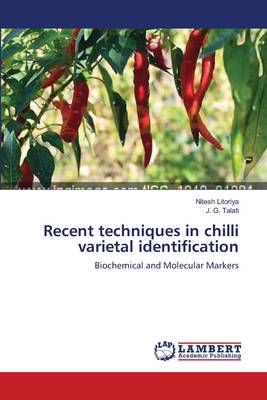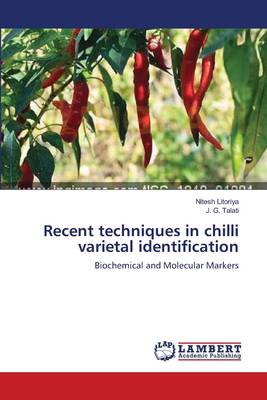
- Afhalen na 1 uur in een winkel met voorraad
- Gratis thuislevering in België vanaf € 30
- Ruim aanbod met 7 miljoen producten
- Afhalen na 1 uur in een winkel met voorraad
- Gratis thuislevering in België vanaf € 30
- Ruim aanbod met 7 miljoen producten
Recent techniques in chilli varietal identification
Biochemical and Molecular Markers
Nitesh Litoriya, J. G. Talati
Paperback | Engels
€ 60,95
+ 121 punten
Omschrijving
Chilli (Capsicum annuum L.) popularly known as hot, bell and sweet pepper or cayenne (English), tianjiao (Chinese), poivron (French) and paprika (German), belongs to genus Capsicum of Solanaceae family. It is diploid (2n = 24), annually cultivated short-lived perennial plant. Though chilli is classified under self-pollinated crops, natural cross pollination takes place up to the extent of 7 to 60 per cent. Therefore, greater amount of variability is observed in this crop. In most of the Indian diets, chilli is mainly consumed as a spice in form of dried powder or fresh green fruits. In addition to high nutritive values, chilli also has medicinal properties. Biochemical and molecular markers can be effective means to determine varietal identification among different genotypes/varieties. Isozyme electrophoresis; SDS-PAGE and RAPD offer potentially simple, rapid and reliable techniques for varietal identification of chilli. Isoelectric focusing, a newly traditional techniques can also more useful for the identification of different chilli varieties.
Specificaties
Betrokkenen
- Auteur(s):
- Uitgeverij:
Inhoud
- Aantal bladzijden:
- 92
- Taal:
- Engels
Eigenschappen
- Productcode (EAN):
- 9783659145841
- Verschijningsdatum:
- 4/06/2012
- Uitvoering:
- Paperback
- Afmetingen:
- 152 mm x 220 mm
- Gewicht:
- 145 g

Alleen bij Standaard Boekhandel
+ 121 punten op je klantenkaart van Standaard Boekhandel
Beoordelingen
We publiceren alleen reviews die voldoen aan de voorwaarden voor reviews. Bekijk onze voorwaarden voor reviews.










